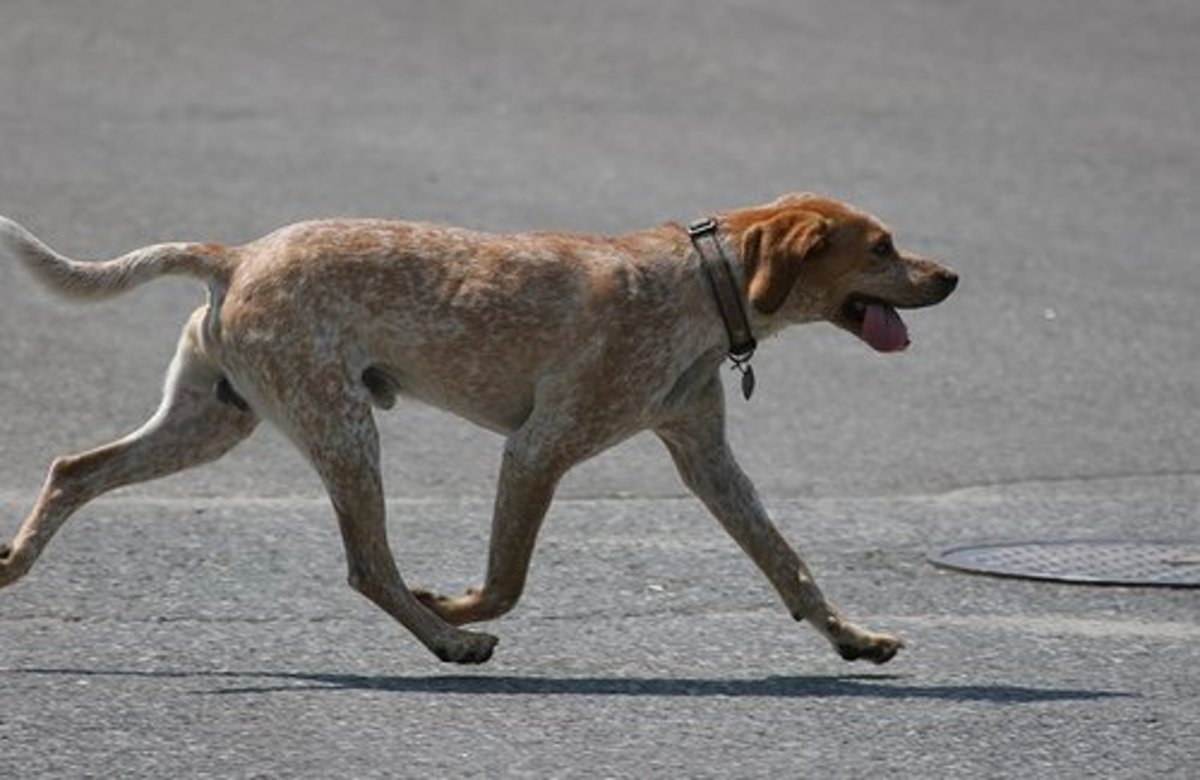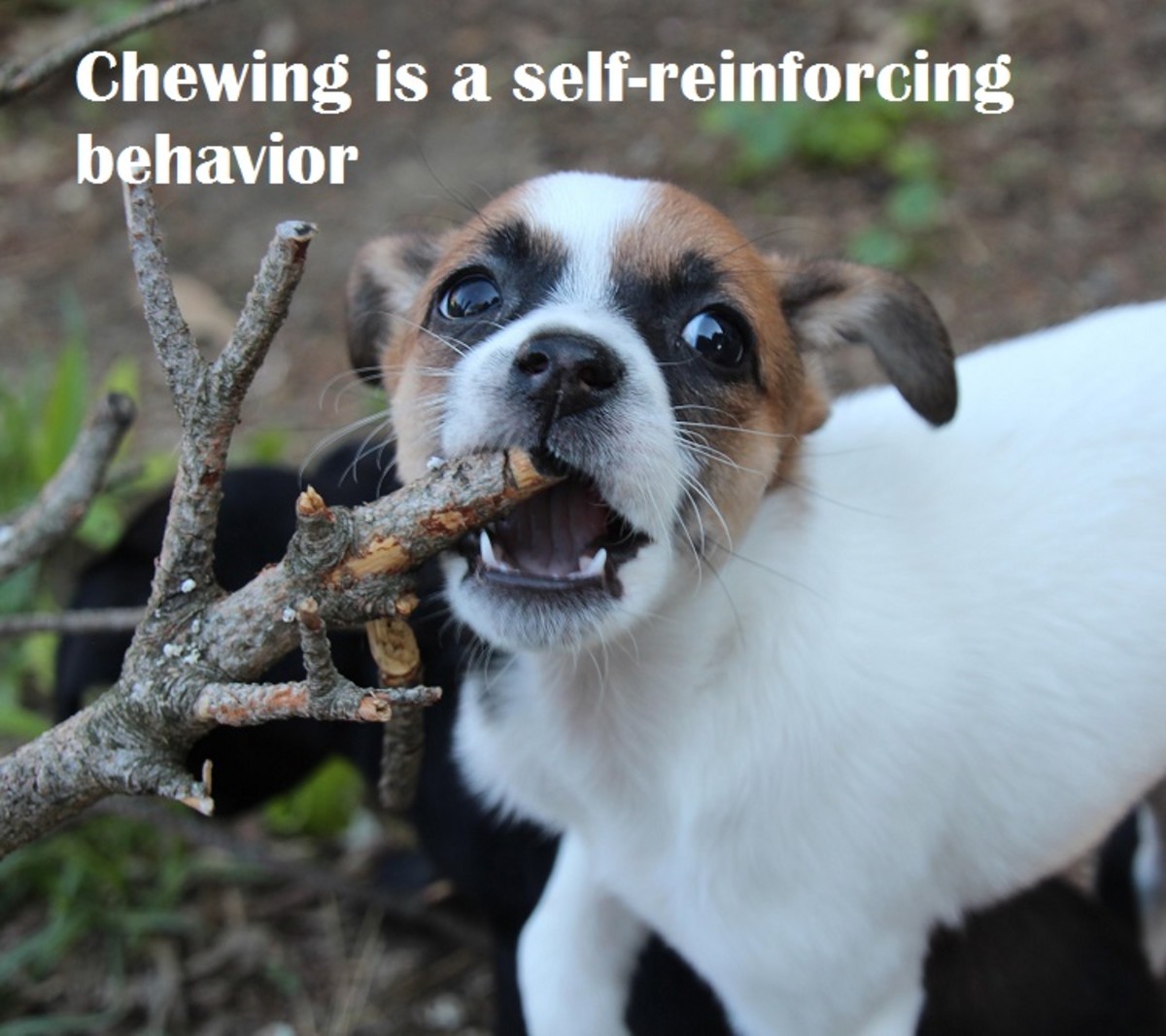How to Choose a Dog Crate
Dog Crates
Dog crates are a great way to kennel your dog while you are at work or while you go out (to a movie, shopping, etc). They are a means to keep your dog safe, while you cannot watch him, as well as a means to keep your house from being destroyed while you're away.
Dog crates are, also, a great way to house train your new dog or puppy.
It may seem cruel to stick a dog, of any size, in a dog kennel for a few hours or more each day, but it is the safest means of protection.
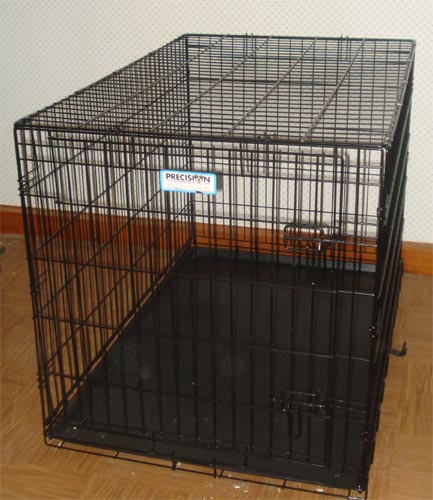
Types of Dog Crates
There are essentially two types of dog crates- 1) the plastic kennel and 2) the wire crate.
Usually, the plastic dog kennels are used as travel kennels when you board your dog on a plane, but you can still use them in you home for every day use. These crates are usually some shade of tan or a dark, hunter green. The plastic crate is essentially 3 pieces- 1) the top piece which has several air holes about 1" by 1.2", 2) the bottom piece with which is solid, and 3) the wire door. The top and bottom of the crate are connected with screws and covered by plastic pieces.
The wire crate is a better ventilated dog kennel. They usually have 1 door, sometimes 2 (1 in the front and 1 on the side). The older wire crates are held together by 4 corner posts, whereas the newer wire crates are hinged together where the middle section fold upwards and the two ends lock the middle in place. Whether you choose the 1 door or 2 door is up to you, both serve the same purpose; usually depending on where you plan on putting the kennel in you home, will determine if you want the 2nd door. (Personally, I have the 1 door because it was about $20 cheaper, but I find that where it's presently situated, it sticks out, so the 2 door would have suited me better, as it would have left more space in the center of the room.)
Count the mistakes
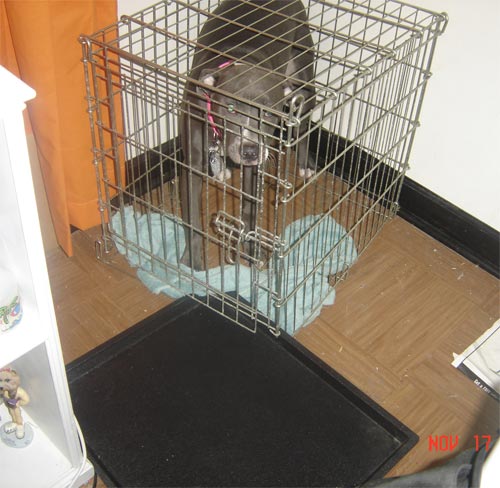
Dog Crate Mistakes and Concerns
These are pretty common dog crate mistakes. I've made them. You've probably made them.
- Never put your dog in his crate with his collar on. You risk your dog strangling himself when the collar gets stuck in the bars.
- Do not put your dog in a crate that is too small for him.
- Do not leave hot wires, cords, appliances, clothes, or anything near or on the crate. You dog may be able to pull them into his crate and chew them up, which can cause you a trip to the vet, especially if the dog ingests something, shocks himself on a hot wire, or worse.
Use your better judgment as to whether you want to leave something in the crate with the dog. Dogs with severe separate anxiety may shred any toy or blanket that you put in the crate with him, whereas some dogs find comfort with a toy in the crate.
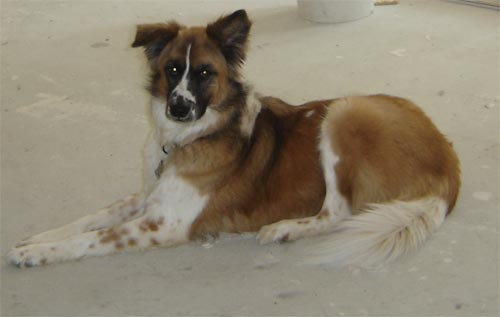
Match the dog with the crate, no not a sizing concern (which will be touched on below), but plastic or wire.
For example, my mother's St. Bernard/Collie mix has severe separation anxiety, and was toted around from place to place from the time we got her as a 5 month old puppy. The day she was left in our house alone, we shut all the doors in the house, leaving her open to the kitchen, hall, and living room; when we returned home, she had dug up the carpet, pulled down the blinds, and chewed the doors knobs. We quickly purchased a plastic dog kennel; we figured the plastic would make her feel more secure; instead she slobbered, panted, and had panic attacks every time we left her home alone. The wire door rusted within weeks. So, we opted to try an appropriately sized wire kennel, and after a few weeks she started pulling at the bars on the top of the crate. After a few more weeks, she managed to pull the bars apart just enough to squeeze out. Now mind you this is a dog with an 7" chest (left to right) and 10" back hips, who squeeze out of a 6" x 5" opening at the top of her crate. We were very lucky that she had not injured herself, internally or externally.
So, take into account your dog. If you think your dog may have a problem with the wire crate, opt for a plastic kennel.
Fleece Bed for Dog Crates
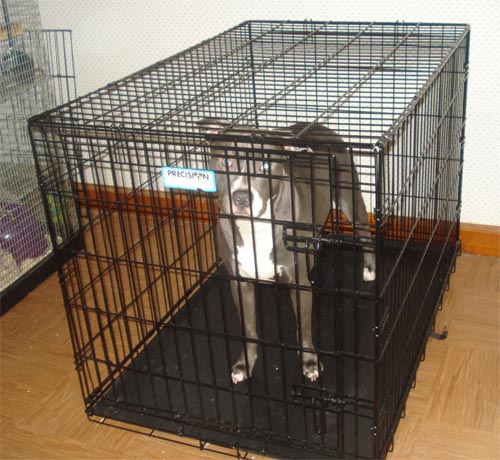
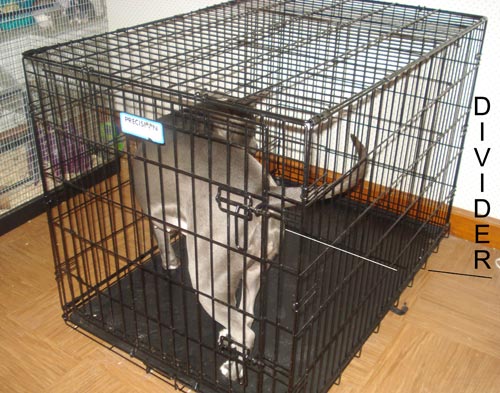
Choosing a Dog Crate
When you choose a dog kennel, the most important thing is not the type of crate, but the size of the dog crate.
Probably the biggest mistake in regards to choosing a dog crate is when people choose crates that are too big for the dog, thinking, "if I'm going to leave him in there all day, I want him to be comfortable."
Well, don't do that.
Dog crates should be just large enough for your dog to be able to sit, stand, lay down, and turn around, comfortably.
The dog should not have to duck his head when standing or sitting in the crate, but at the same time you don't want him to be able to run laps inside the kennel.
The purpose of a dog kennel, especially when crate training your new dog, or puppy, is to teach the dog not to potty in the crate. By giving your new Chihuahua puppy a medium sized kennel, you're teaching him that it's ok to potty on one side of the crate and lay on the other side. What you want to teach him is not to potty inside the crate. But at the same time, remember that you can't leave a small Chihuahua puppy in a crate for an entire work day without letting him out at least once on your lunch break. Small puppies that, regardless if they're house trained, just can't hold it that long; the same goes for all young puppies, regardless their size.
The problem that pet parents of puppies who will eventually be large dogs come across is, "I just don't want to have to buy more than one crate. If he's going to fit in a large size, why do I have to buy the small?"
The answer is simple. Make sure that the kennel comes with a divider. If not, you'll want to purchase a divider from the manufacturer.
Place the divider inside the cage, according to the instructions. Usually, the divider has clips that just attach to the inside of the crate. Give the dog enough room to sit, stand, lay down, turn around, and nothing more. As the dog grows, move the divider back, until you no longer need the divider.







